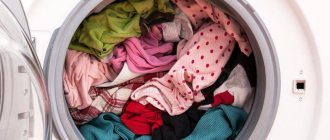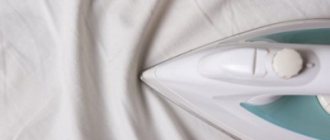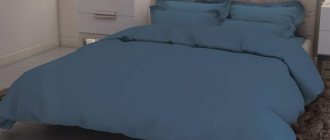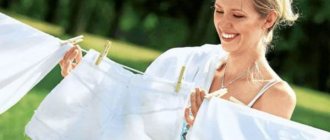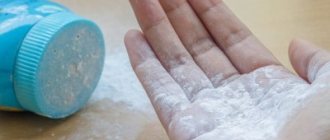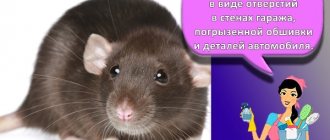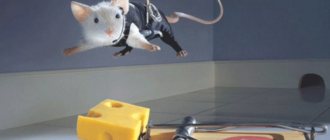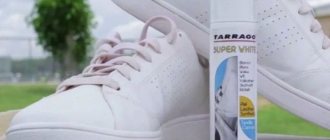Bleaching bed linen: how to remove yellowness, stains and grayness at home
Why does bedding turn yellow or take on a grayish color? It's all due to hard water and powder. Hard water contains salts. The interaction of powder elements with them leads to the fact that the fabric loses its snow-white color, becomes grayish or yellowish, and the result is washed laundry. The color of the bedding changes if it is stored for a long time in a damp room. After such storage, the sheets become gray, as if they had never been white as snow. Bed linen also loses color when left in the same basket with dirty clothes for a long time: therefore, it is not recommended to put off washing white sheets (take them off and wash them).
You can return the snow-whiteness of your sheets. Likewise, a yellowed, greasy pillowcase and a snow-white tablecloth are also difficult to immediately put in order and give freshness. You just need to know how. There are many methods of bleaching - you can use improvised products, store-bought bleaches, and even good old boiling, which has been a hobby for many generations of housewives.
Choosing a product in the store
Store-bought products will help you bleach very dirty laundry at home quickly and efficiently. This method requires minimal time and effort. Household chemicals departments sell various bleaching products: you can choose both budget and expensive options. Bleach is divided into three types:
- optical;
- chlorine based;
- oxygen
To make a choice, you need to know the features of each type. All products have their pros and cons, but finding an effective and best bleach is a feasible task. The table below will help you decide.
Table - Pros and cons of different types of bleaches
| Bleach type | pros | Minuses |
| Optic | — Creates a visual effect “whiter than white”; - can be added when washing in an automatic washing machine; - found in powders | - Whitening does not actually occur - only a visual effect; - does not cope with stains and dirt |
| Chlorine based | — Available bleaching agent; — effectively whitens; — removes dirt; — disinfects | — Thins the fabric, causing the bedding to deteriorate; — you can’t put it in the washing machine (hand wash only); — evaporation of caustic compounds provokes irritation of the respiratory tract; - upon contact with skin causes itching, flaking, allergic reactions |
| Oxygen | — Safe (no chlorine); — whitens effectively and delicately; - can be applied to any type of fabric; - suitable for washing machine | - High price |
When choosing laundry bleach at home, it is better to give preference to modern household chemicals. Oxygen bleach for clothes is safe, environmentally friendly and copes with the main task “with a plus”. As a bonus, it saves time, because most modern products are designed for machine whitening.
Chlorine-containing bleaches are popular “the old fashioned way”: for a long time housewives had no alternative, and when a choice arose, many continued to buy the products they were accustomed to. The cost of chlorine-containing bleaches is also attractive, but they make the fabric thinner, so in reality it only creates the appearance of savings.
Let's create a white effect
Chlorine-containing bleaches are quite aggressive towards fabrics. Of course, even after a one-time use of such a product, the bed linen will be snow-white. But there is another side to the coin - the set will become thinner, the fibers will become more fragile, and the thread weaving will weaken. To prevent this, it is better to choose household chemicals that are harmless to the material.
You can safely refresh your bedding set using optical brightener.
The components that make up such bleaches are able to reflect light. The product contains dyes that are not washed out when rinsing, but remain in the fibers of the fabric. The sun's rays, when hitting a sheet or duvet cover, are reflected with a pleasant blue tint. The linen looks sparkling and snow-white.
The main disadvantage of optical brightener is the ability to cause an allergic reaction. So it is not advisable to use such a product for washing children's sets or the laundry of adults prone to allergies.
Good old ways: boiling and soaking in white
For a long time it was believed that the best way to return dazzling cleanliness to bed linen was boiling. This method is suitable for cotton and linen sheets and duvet covers. It is still used as an alternative to harsh chemical bleaches. Boiling will help if you need to wash bed linen from yellowness. The downside of this method is that you have to spend time.
You can do without boiling. The second method known to all housewives is soaking in white. Bleach contains chlorine, so be prepared to wash it yourself. You cannot add such products to the machine.
Let's boil
- large capacity (necessarily enameled/galvanized);
- white towel or cloth;
- laundry powder/soap;
- ammonia.
- Line the bottom of the selected container with a white cloth.
- Make a soap solution. If there are “blots” on the sheet, wash them with laundry soap.
- Send the laundry to the boiler. Try to straighten it out as much as possible.
- Pour enough soap solution to cover the laundry.
- Add a tablespoon of ammonia. You can skip this step if there is no dirt on the sheet.
- Boil for about an hour. Be sure to use a wooden stick for stirring.
Soaking
- Prepare a soap solution using powder or laundry soap.
- Add white: for every 3 liters - a tablespoon of the product.
- Soak the bedding for 20 minutes.
- Rinse thoroughly by hand.
How to bleach white bed linen without extra costs
You can wash your bed linen from grayness using available products. Soda solution, peroxide, potassium permanganate, mustard powder and even vegetable oil are the main assistants of the housewife. Folk remedies are easy to use (as opposed to boiling) and safe compared to the use of chlorinated bleaches.
Peculiarities . A universal method that does not require effort. After using the soda solution, the laundry can be washed in a machine.
- Mix five tablespoons of soda with half the amount of ammonia.
- Dilute in 5 liters of water.
- Soak the laundry for two hours.
- Machine wash.
Peroxide
Peculiarities . Whitening laundry with hydrogen peroxide is simple. At the same time, the product copes well with grayness. Whitens delicately, so can be used on any material.
- Prepare a solution of two parts peroxide and one part ammonia.
- Dilute the solution with 5 liters of warm water.
- Soak the sheets for 40 minutes.
- Rinse.
Mustard
Peculiarities . Mustard powder not only whitens, but also removes fat and disinfects. The method can be used even for delicate fabrics, such as silk sheets.
- To whiten one sheet, boil 3 liters of water.
- Add three tablespoons of mustard (powder) to the water.
- Leave the mustard solution for two hours.
- Drain the water so that the remaining powder remains at the bottom of the pan.
- Soak the sheet in the drained water for 20 minutes.
- Wash it.
Potassium permangantsovka
Peculiarities . Bleaching linen with potassium permanganate is rarely practiced, all because of the property of manganese to color fabrics. Few people know that potassium permanganate is an excellent whitener. With its help, you can restore whiteness even to things that have long since turned grey. The only downside is that you have to wait.
- Rub a hundred gram piece of laundry soap.
- Dissolve the shavings in 10 liters of boiling water.
- Dilute potassium permanganate in a separate container to a faint red tint and combine with soap solution. The result will be a brown liquid.
- Soak the laundry in the solution for six hours. Close the container in which the laundry is soaked with a lid. No lid? Polyethylene will help out.
- After time, wash and be surprised at the shining whiteness.
Sunflower oil
Peculiarities . Oil is associated with greasy stains, but if you know what to mix it with, it can help whiten fabrics. The multi-component method is worth trying for those who love experiments at home.
- Boil a bucket of water.
- Add the ingredients: sunflower oil (two tablespoons), salt and soda (a tablespoon each), washing powder - (a glass).
- Pour the prepared solution over the laundry and leave for a day.
How to wash white bed linen from yellowness?
How to wash white bed linen from yellowness? This problem has not only appeared now, so there are many modern and old folk remedies in order to rid bed linen of unpleasant yellowness. Previously, as we already recalled, our grandmothers boiled yellowed bed linen and added blue during boiling, believing that this would give it a fresh blue color.
The boiling process lasted so long that water was often added, which evaporated during boiling; in general, the pleasure from such work was very dubious. In addition, it is worth considering that the fabrics that were used to sew bed linen in the time of our grandmothers could withstand the Third World War, if necessary. The density of the fabric was more like tarpaulin.
Modern fabrics from which PBC is made are more delicate and thin, so few of them will withstand many hours of boiling. Not all of them can withstand washing at 90 degrees. So, for example, if you bought a family set of silk bedding, the manufacturers will write a temperature of no higher than 30 degrees in the washing recommendations. Many manufacturers recommend washing their product at a temperature no higher than 40 degrees.
Let's see what folk methods, more humane ones, have been left to us as an inheritance. The first substance that has been helping housewives achieve sparkling white bed linen for many years is baking soda. How we will whiten bed linen with its help. The first method, which can be used if the linen is in more or less normal condition and the yellowness is still barely noticeable.
For such laundry, you can simply add soda during normal washing in the machine. Baking soda also helps in removing blood stains from fabrics; we already know how to remove blood stains from bed linen. In addition, soda, dissolved in water, can make it softer, this will have a positive effect on the quality of washing, because, as you know, if the water is very hard, it contributes to the formation of yellowness on white bed linen. Therefore, the softer the water, the snow-white the laundry.
If the PBC has turned yellow for a long time, then simply adding baking soda during washing will not be sufficient. Here you already need a special bleaching mixture, which you can prepare yourself. But pour 500 grams of soda into two tablespoons of ammonia, fill it all with five liters of water, mix thoroughly.
Soak the bed linen in the resulting liquid. We leave the linen in the solution for at least two hours, after which it is necessary to rinse well and then dry the bed linen so as not to store it wet, otherwise the procedure for getting rid of yellowness will have to be carried out very often.
Tips for caring for white sets
Housewives say there is a lot of hassle with white bed linen. After just a couple of washes, you have to look for a solution on how to return the sheets to their shining whiteness. This can be done if you adhere to the following rules.
- Wash it properly. Sort your laundry: Colored and white sheets should be placed in the machine separately. Follow the rule, even if you know that colored fabric does not fade: such proximity “eats” the shining whiteness of the sheets. And wash the bed right away: dirty sheets, after lying in the basket, will turn yellow.
- Rinse well. To prevent laundry from turning yellow, it must be rinsed carefully. It is advisable to do this first in warm and then in cold water.
- Soften the water. If you actively “exploit” white bed linen, then you have to wash it often. Regular contact with hard water causes the fabric to turn yellow. Your job is to soften the water. Use powders containing softeners, add soda or vinegar solution to the machine.
- Store wisely. Before storing white bedding in the closet, make sure it is completely dry. Moisture turns laundry gray and smells bad. If you like white bedding, you shouldn't equip cabinets to store it in the bathroom. It's too humid here: chances are that when you put a white sheet on the shelf, you'll get a gray one. Do not allow bedding to sit: regularly remove it from the closet for airing. To prevent a musty “aroma,” wash your laundry with pieces of soap.
Bleaching bed linen at home will not be useful if you get into the habit of soaking white sheets before putting them in the washing machine. You can add peroxide or a couple of drops of lemon to the bowl. If the duvet cover is heavily soiled, add dish detergent to the soaking water.
Source
Tips for caring for bed linen
Snow-white “decoration” for the bed is a complete hassle. Many housewives think so, because after only 2-3 washes you have to think about how to wash yellowness from bed linen and return the fabric to its impeccable shine.
In fact, the problem can be prevented and it is not difficult if you adhere to the following recommendations:
Washing according to the rules
Don't forget to sort your items before placing them in the washing machine drum. Always wash white and colored sheets separately, even if you are 100% sure that the colored fabric will not fade - the impeccable whiteness of the fabric will be “eaten up” by such proximity. And do not leave dirty bed linen in the basket for a long time - this will quickly turn it yellow.
High-quality rinsing
To protect home textiles from yellowing, they need to be rinsed well after washing. It is advisable to do this first in warm water, then in cool water. For machine washing, you can select the double rinse mode.
Water softening
The fabric turns yellow from regular contact with hard water. To make the water softer, use special detergents with softeners. You can also add baking soda or vinegar when washing and rinsing.
Proper storage
Make sure the bedding is thoroughly dry before storing it in the closet. When wet, laundry turns yellow or gray and acquires an unpleasant damp smell. For the same reason, you should not store snow-white sets in places with high humidity. Try to prevent textiles from caking - regularly take out the laundry to air, and to prevent musty “odors”, cover the bedding with pieces of soap.
You won’t have to figure out how to remove yellowness from bed linen if you get into the habit of soaking snow-white sets before washing. You can add hydrogen peroxide or a couple of drops of fresh lemon juice to the water. Machine washing is even easier - modern devices are equipped with a convenient pre-soak function.
Which special whitening products can help?
The easiest way is to buy bleach. Its active substance can be chlorine or oxygen.
There is also a new product - optical brighteners. They operate due to special reflective substances contained in their composition. In essence, this is similar to dyeing clothes. We can say that it is re-painted white, so if there are stains, there will not be much effect. In this case, it is better to pre-clean the fabric and then use bleach.
Chlorine-based products are the most common. In addition to eliminating yellowing, the laundry is also disinfected. But such bleaches have one very big drawback - they greatly damage the fabric. Ordinary bedding can withstand a maximum of 2-3 such procedures before it turns into a kind of gauze. In addition, chlorine bleaches can only be used for hand washing. As a result, in addition to damaged tissue, you can also get skin damage and irritation of the mucous membranes of the oral cavity and respiratory tract.
The most delicate bleaches are oxygen-containing. They can be used on all types of fabrics and work well in cold water.
Application of modern chemical reagents
Chlorine-containing bleaches are often mistakenly attributed to universal compositions for cleaning stubborn stains, disinfecting and imparting whiteness. Aggressive active substances disrupt the structure of fabric fibers, so products containing chlorine should be used with great caution and are strictly prohibited for treating delicate and synthetic thin materials.
Among innovative chemical products, gentle oxygen-containing whitening compounds deserve special attention. Advantages of oxygen bleach over analog chemicals:
- Soft oxygen bleaches are applicable to all types of materials. The action of the active substance is not limited by temperature, which means that the whitening procedure is possible at 30 o.
- Oxygen bleach, unlike chlorine, is non-toxic and can be used for washing children's clothes.
- The harmless composition does not contribute to metal corrosion, therefore it is used for automatic washing.
Whitening with an oxygen-containing composition will significantly save time and effort. Instead of regular washing powder, it is enough to pour liquid or dry bleach into the machine and select the mode depending on the type of fabric.
Optical types of brighteners have a truly unique visual effect. In fact, such products do not remove stains and yellowness from laundry, but can enhance the color quality. The optical powder contains reflective microparticles that impart radiant properties to washed white items.
The power of oxygen
At home, you can restore the whiteness of a grayed bedding set in another way. Oxygen bleaches are effective, safe, do not cause allergic reactions, suitable for cotton, synthetics, and delicate fabrics . Available in two forms: liquid and powder.
Oxygen bleaches are made from carbonate or carbonate peroxyhydrate. During the cycle, the active substance breaks down into soda, which has a bleaching effect, and peroxide, which releases oxygen. Due to the saturation of water with bubbles, contaminants are much better washed out of the fabric fibers.
Today, housewives prefer the following bleaches with active oxygen:
- Eco-Way Oxygen;
- Sarma Active;
- LionClean Plus;
- Antipyatin Oxi-formula;
- Spivak;
- Vanish Oxy;
- Greenfield Oxy Crystal;
- Persol Extra.
The main advantages of oxygen bleach:
- does not harm delicate fabrics;
- works even in lukewarm water;
- removes old, stubborn dirt;
- completely rinsed;
- extremely rarely causes allergic reactions.
As for the disadvantages, this is a decent cost of the product and quite a large expense. Although among oxygen bleaches you can find inexpensive packages. For example, Antipyatin with active oxygen costs about 65 rubles, and Persol - only 30 rubles.
What did the grandmothers use?
Household chemicals were not always available. And our grandmothers also needed to wash yellowed bed linen. Moreover, folk remedies are always at hand and do not require special investments.
It is a good replacement for expensive bleaches. Fabrics can withstand high temperatures without problems.
Take a large saucepan. Its bottom is covered with a towel. Add shavings of laundry soap and place the laundry, straightening it out as much as possible. Next, pour water and add a few drops of ammonia. The boiling process lasts about an hour.
You can remove the smell remaining after soap and ammonia by washing with products containing essential oils. As a result, your laundry will become fresher and more pleasant.
Whiteness, in its essence, is no different from chlorine bleach. It is also not used in machine washing and ruins the fabric.
Baking soda is a safer way to whiten.
Take 10 liters of warm water and add half a glass of ammonia and 10 tablespoons of baking soda to it. We put the laundry there and leave it for several hours. Next, we take it out, rinse it and wash it in the washing machine.
You can also immediately add baking soda when washing. You need to pour it into the powder compartment. The effect will not be strong, but with a slight yellowing it will be noticeable.
First, the laundry is washed in a washing machine. Next, take a pan, pour about five liters of water into it and heat it to about 70 degrees. Add 50 ml of peroxide and 25 ml of ammonia to hot water. After washing, the laundry is soaked in this solution for half an hour. Afterwards, rinse under running water.
Using mustard powder is very easy and simple. You just need to dilute it in warm water. Place the laundry that requires bleaching into the resulting mixture and leave for several hours. After the time has passed, it is enough to rinse things.
How not to spoil it?
- It is strictly forbidden to remove rust from white items using bleach. Soaking results in a general yellowing of the material.
- Prolonged soaking of items with metal fittings leads to oxidation and stains. Soaking in warm water for a short time is recommended.
- Choose plastic basins for the procedure. Chemical compounds interact with the metal surface.
- Boiling water helps to embed stains deeper into the fiber. Removing stains after soaking in very hot water becomes more difficult. In most cases, it is enough to heat the water to 50 degrees for the method to be effective.
- Chlorine-containing bleaches can irreversibly damage items; they are recommended for use on thick fabrics when other methods are useless.
- Before using any method, you must study the product label information.
- Remove any debris from pockets and shake the fabric thoroughly to remove excess dust.
It is important to properly care for and store snow-white items to prevent yellowing and graying of the fabric. Things will retain their appearance longer if they are completely dried before placing them in the closet. A damp item will quickly turn gray during storage. Lightly fluff bedding to ensure aeration of fibers.
Video instruction
Every woman’s closet contains items that require a special approach and washing conditions, but cannot be handed over to dry cleaning professionals. The simple task of how to bleach underwear at home has its own characteristics and nuances, the observance of which will help return the item to its original white color and not spoil it. It is important to know what products can be used to bleach delicate lace items and how to use them correctly.
Many girls are familiar with the situation when recently purchased snow-white underwear fades over time, acquires a dark shade and fades to gray. This happens even if you wash it separately from all things and only by hand. Therefore, you need to know not only how to bleach lace underwear, but also how to wash it in order to maintain its original snow-white appearance longer.
Preparing for washing
To ensure that the laundry becomes white and all stains are removed from the fabric, you need to prepare things for washing. It is better to do this by soaking them first. Pour warm water into a wide basin, add washing powder, bleach (if the fabric allows) and place the laundry. Leave the items to soak for 4-5 hours, and then proceed to washing.
If you plan to use a certain bleaching product, do not be lazy and test its effect on an inconspicuous area or a separate piece of the same fabric so as not to spoil the laundry.
Rules for washing bed linen
If you initially learn and follow the basic rules for caring for your linen, you can avoid the appearance of signs of premature wear and keep your bedding in good condition throughout its entire lifespan. Here are the rules:
- It is prohibited to use bleaching products that contain chlorine compounds;
- It is forbidden to wash white or black items with colored ones;
- bright colored sets of linen must be washed separately, and white ones - separately from other fadeable items;
- It is necessary to use specialized products for washing with components that protect color;
- Do not use bleach on bright textiles; stains should be removed using specialized products with caution;
- it is important not to exceed the recommended temperature when washing;
- It is forbidden to overload the washing machine, this also leads to damage to things.
If you wash your bed linen frequently and do not follow basic care rules, it will wear out quickly. But if this has already happened, you can try to restore the original appearance.
What products can be used to whiten lace underwear?
Not so long ago, the only remedy that helped at home to return things to their original snow-white appearance was bleach. But it is considered an aggressive substance, and if used incorrectly, it can ruin a thin synthetic item. Today, there are many types of bleaches, which contain other, more gentle components. Therefore, when deciding how to bleach lace underwear, it is worth familiarizing yourself with the features of their use.
Among the most effective means and methods of whitening are:
- Boiling – suitable for cotton fabrics only.
- Salt and soda added during washing help return the product to its beautiful white color.
- Oxygen bleaches are the most gentle and effective preparations that allow you to process any fabric, including synthetics. In addition, they are suitable even for colored linen, making its color brighter and more saturated.
- Bleach is a bleach-based solution that gives a good result, but is not applied to all materials, and over time it spoils the fabric fibers.
- Optical means do not bleach things, but rather tint them, so that visually it seems that the product is clean and snow-white.
- Improvised and non-traditional means for whitening, for example, hydrogen peroxide or ammonia.
Over time, white and light bedding acquires undesirable shades - yellowish or grayish. The reason for this is a chemical reaction between some ingredients in laundry detergent and salts in hard water. In addition, improper storage of things in damp rooms has a negative impact on the white color. You can restore the whiteness of fabrics made from natural fibers by using household chemicals and folk remedies.
The easiest and most convenient way is to buy special products for whitening bed linen in the supermarket, which the modern market offers in a huge assortment.
They are divided into three groups:
Oxygen-containing products
Their main advantage is the safety of use for all types of fabrics. They perform their task well of bleaching cotton, linen products and fabrics with synthetic fibers in low temperature water.
The second advantage is ease of use. The dry detergent can be added to the powder in the washing machine or directly into the drum. Liquid - into the pre-wash compartment of the machine.
The third plus is harmlessness. They do not cause allergic reactions and do not have an unpleasant odor. Suitable for children's bedding.
Bleaches containing chlorine
The advantage is affordability. They have disinfectant properties. Disadvantages include the rapid destruction of fabric with frequent washing, and the inability to use in washing machines. Manual bleaching is accompanied by a pungent odor and irritation to the skin of the hands and respiratory tract. They are strictly contraindicated for allergy sufferers.
Optical preparations
These super new bleaches are used exclusively on clean, stain-free items. The effect is achieved due to the reflective components included in the preparations.
The product manufacturer's recommendations indicated on the label will help you make the right choice of bleaching agent. It indicates the conditions for the procedure.
You need to carefully study the instructions on the packaging of the drug. The maximum whitening effect will be achieved by the drug if the annotation contains the note “for white”.
How to restore freshness to yellowed laundry
As mentioned earlier, the loss of whiteness of bed linen is a consequence of poorly selected powder and the use of low-quality water. There are several ways to effectively whiten bed linens.
Articles on the topic (click to view)
- What are the sizes of duvet covers?
- Is it possible to sleep without a pillow
- What are the sizes of pillowcases?
- Poplin or satin - what's the difference, which is better for bed linen
- Is it possible to wash a sheep's wool blanket?
- How to bleach kitchen towels at home without boiling
- How to wash kitchen towels in the microwave
Bleaching with household chemicals
The easiest option is to purchase bed linen bleach, which may be chlorine-based. There are also oxygen and optical brighteners. Methods of use are always described on the packaging of bleaching products.
Chlorine-containing
Chlorine-containing products are good at removing the yellow color from laundry, but at the same time they are very harmful to fabrics. After using such bleaches, bed linen loosens, as chlorine destroys the structure of the fibers. In addition, chlorine-based bleaches are used only for hand washing, so you need to protect your hands and respiratory tract from the toxic fumes of this substance.
Important! Do not use chlorine bleach if there are patterns on the fabric, otherwise the product will ruin their color.
Oxygen
Oxygen bleaches are delicate, so they are suitable even for all types of fabrics. In addition to their main effect - whitening, they additionally add brightness to colored laundry. The cost of oxygen bleaches is high, but it is justified by the fact that the products will last you longer due to their gentle effect on fabric fibers.
Aqueous solution of bleach
Whiteness is an aqueous solution with a large amount of sodium hypochlorite concentrate. The mixture of chemical substance in solution can be up to 85% of the total volume. Whiteness is one of the most common means for bleaching laundry at home or in production. This product also has disinfecting properties.
Important! Whiteness loosens fabric fibers with regular use.
Traditional methods
You can bleach laundry at home using available products. Before using this or that method, wash the product as usual, which will remove most of the dirt and simplify the bleaching process.
Boiling
This method was used by our ancestors and has proven its effectiveness. How to bleach laundry by boiling? Our grandmothers also placed laundry that needed to be bleached in a large metal container and boiled it until the color returned. For difficult stains, add shavings of laundry soap to the water. It will help restore color brightness and remove even stubborn stains.
In order for the boiling process to be successful, the following recommendations must be followed:
- Place clothes and laundry in a container of cold water before placing it on the stove. If you place an item in boiling water, the stains will harden in the fibers and the yellow color will become brighter.
- After the water boils, reduce the heating power.
- Stir the laundry in the container regularly.
- After boiling, it is important to rinse the item thoroughly.
The duration of the process depends on the degree of contamination of the laundry. As a rule, an hour is enough for things to return to their attractiveness and cleanliness.
The method is suitable for bleaching when hand or machine washed. Whitening clothes with soda is an economical and simple way, since soda is available in almost every home. For machine washing, add a few tablespoons of product to the powder compartment or directly into the drum. The method is effective against fresh stains and dirt.
Dissolve 5 tbsp. soda and 2 tbsp. ammonia in 5 liters of warm water. Soak the item in the solution for 2-3 hours. Wash your laundry as normal.
Ammonia
The popularity of the product lies in its safety for whitening children's underwear. Soak the laundry in a solution of 1 tbsp. ammonia and 5 l. water for several hours. Remove heavy stains by rubbing them with a clothes brush.
If you don’t have time to soak, moisten a cotton pad with ammonia and treat the dirty area. Saturate the fabric thoroughly and leave for some time for the product to act.
Add 2 tbsp. spoons to powder during normal washing. The method allows you to maintain the whiteness of the laundry and remove existing yellowness. The method is as effective as possible.
Hydrogen peroxide
Effective when used independently and in combination with other products. Whitening has an effect in both washing and rinsing.
For linen or cotton, dilute in 5 liters. water 2 tbsp. hydrogen peroxide and heat the resulting seven to a temperature of 80 degrees. Soak the product for 25 minutes. For better effect, add 1 tbsp to the mixture. ammonia.
For delicate fabrics, prepare a similar solution, but reduce the heating temperature to 35 degrees. Apply a contrast rinse to brighten the color.
A mixture of hydrogen peroxide and ammonia will help achieve quick results.
Vegetable oil
It seems surprising that fatty vegetable oil can help whiten things, however, the effectiveness of the method has been proven by the experience of our mothers and grandmothers.
Pour water at a temperature of at least 90 degrees into a metal basin. Dissolve 2 tbsp in it. vegetable oil, salt, bleach, 1 tbsp. soda and 1 tbsp. powder. Soak the product in the solution and place the container on the fire. Boil the water for 30 minutes while stirring constantly. Turn off the stove and wait until the water cools completely. Rinse the item thoroughly in cool water.
By using boiling, you will significantly reduce the time required for bleaching. Without boiling, soak the product in the prepared solution for a day, then wash as usual.
Potassium permangantsovka
Do not be afraid of staining your laundry when using the substance.
Dissolve several crystals of potassium permanganate in 1 glass of table vinegar. Soak a cotton pad in the solution and treat the contaminated area. It is used when it is not possible to fully bleach laundry.
Dissolve a pinch of potassium permanganate in warm water until a light pink tint appears. Dissolve detergent in water. Wash the item as usual, rinse in the resulting potassium permanganate solution, which must first be cooled.
In everyday life, modern housewives rarely use laundry soap, believing that the product is outdated. Laundry soap has a number of advantages: it removes old stains of any origin, disinfects, and whitens. Effective in combination with other means, as well as when used independently.
Before washing, you need to prepare soap shavings by grating the bar. Use a detergent to soak laundry before washing. To bleach, pour the shavings into the powder compartment when washing in the washing machine. Combination with soda enhances the whitening effect of soap.
When bleaching fabric, it is important not to harm the appearance of the product or disrupt the structure of the fabric.
Bleaching using a machine
Almost all modern automatic washing machines are equipped with an additional section for bleach. Therefore, refreshing your bedding in the washing machine will not be difficult. The algorithm of actions will be as follows:
- sort the laundry, dividing it into batches by fabric type and color;
- Pour washing powder and bleach into the detergent tray into the appropriate compartments. Strictly follow the dosage;
- turn on the machine;
- select a washing program based on the type of fabric;
- start the cycle.
If your washer does not have a separate section for bleach, you will have to do this work manually. After the main wash, remove the laundry from the drum, add oxygen bleach to the basin according to the instructions, and soak the set in the solution.
When choosing bleach, pay attention to the temperature at which it begins to act. Thus, good products with active oxygen are activated already at 40°C; some manufacturers recommend washing at 60°C.
Whitening with home remedies
Simple and affordable means at hand, proven by many years of folk experience, will help if you want to avoid the use of chemicals. On average, a person spends a third of his life sleeping, so harmless methods of whitening clothes are quite relevant.
Boiling
White cotton and linen bed linen can be boiled without the risk of spoiling it. This procedure is a safe disinfection and will replace aggressive chemical bleaches. The effect will be better if you boil pre-washed laundry.
In a large saucepan - enameled or stainless steel - dissolve washing powder or laundry soap shavings, add 1 tbsp. a spoonful of ammonia. Immerse things in the solution. Boil. Boil, stirring. The duration of the process depends on the degree of contamination.
If the laundry is highly soiled, you can add a bleach solution. Add a mixture of 1 teaspoon of bleach and 1 liter of water to boiling laundry, stirring it thoroughly. Boil for 20 minutes. Finally, many housewives add 10 drops of blue to 10 liters of water in the last rinse to enhance the whiteness effect. It is advisable to dry the laundry in the open air after boiling.
Baking soda NaHCO3
It is good to bleach sheets, duvet covers, and pillowcases in a healthy way using soda. It is carried out by soaking things in a solution of 10 tbsp. spoons of soda, 5 tbsp. spoons of ammonia per 10 liters of warm water. Soaking time – 3–4 hours. Wash as usual in the washing machine. If the result does not satisfy you, the procedure can be repeated. The yellowish tint should disappear.
Lightly washed clothes can be washed in the machine by adding baking soda to the compartment along with washing powder. Baking soda will soften hard water, which will improve the quality of your wash.
3% hydrogen peroxide H2O2
You must first wash your clothes in the machine. Heat 10 liters of water to 60 degrees, add 4 tbsp. spoons of peroxide and 1 tbsp. a spoonful of ammonia. Place the prepared items into the solution for 40 minutes. Rinse.
Leave the laundry in a warm composition at a concentration of 2 teaspoons per 2 liters of warm water for 2–3 hours. Rinse and wash. Boric acid can be added to the powder during washing or boiling.
According to some housewives, boric acid is an ideal means for rinsing white linen. The rinse solution is prepared at the rate of 2 tbsp. spoons per 3 liters of water. Then comes rinsing in clean water.
